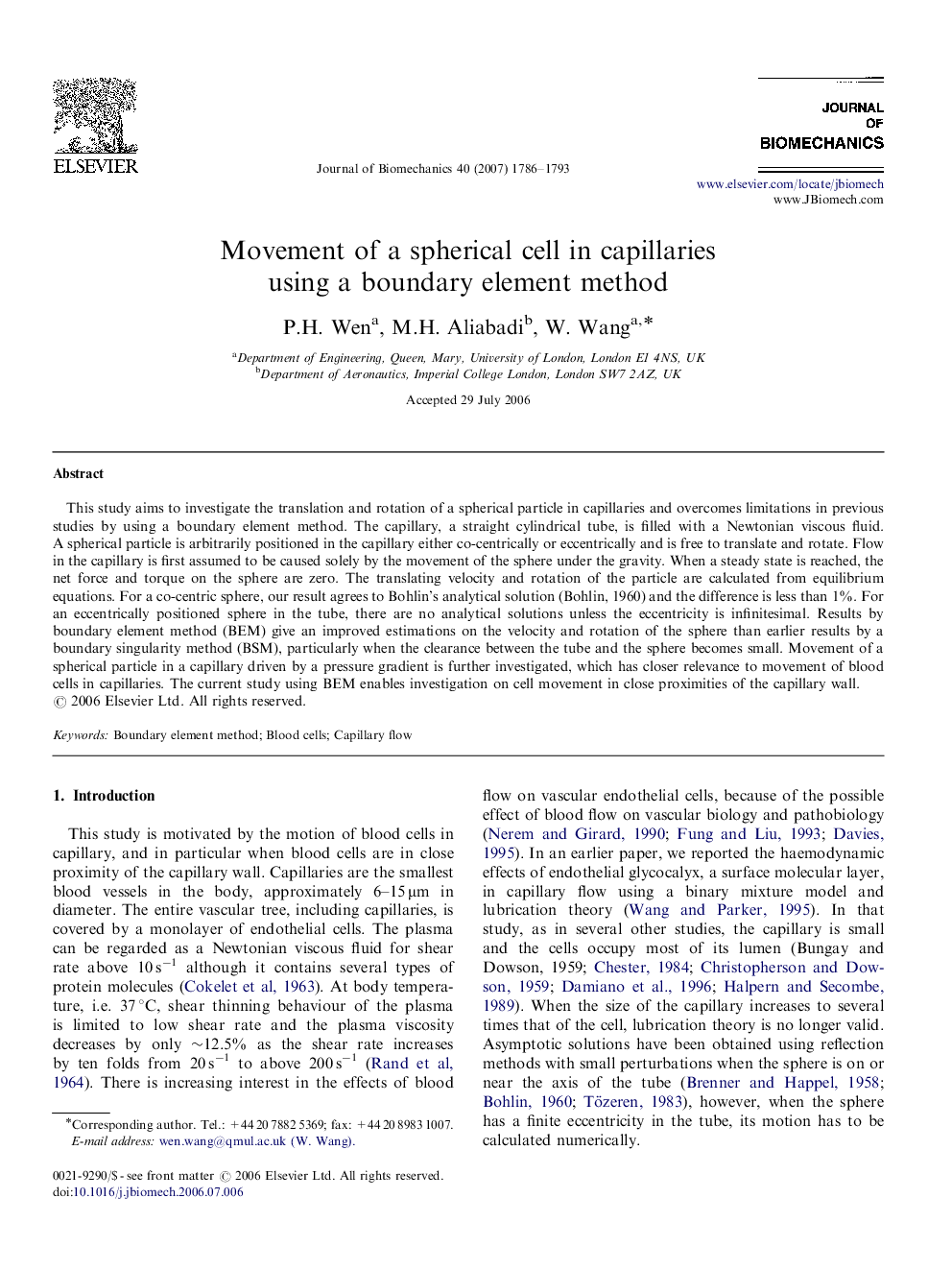| Article ID | Journal | Published Year | Pages | File Type |
|---|---|---|---|---|
| 874375 | Journal of Biomechanics | 2007 | 8 Pages |
This study aims to investigate the translation and rotation of a spherical particle in capillaries and overcomes limitations in previous studies by using a boundary element method. The capillary, a straight cylindrical tube, is filled with a Newtonian viscous fluid. A spherical particle is arbitrarily positioned in the capillary either co-centrically or eccentrically and is free to translate and rotate. Flow in the capillary is first assumed to be caused solely by the movement of the sphere under the gravity. When a steady state is reached, the net force and torque on the sphere are zero. The translating velocity and rotation of the particle are calculated from equilibrium equations. For a co-centric sphere, our result agrees to Bohlin's analytical solution (Bohlin, 1960) and the difference is less than 1%. For an eccentrically positioned sphere in the tube, there are no analytical solutions unless the eccentricity is infinitesimal. Results by boundary element method (BEM) give an improved estimations on the velocity and rotation of the sphere than earlier results by a boundary singularity method (BSM), particularly when the clearance between the tube and the sphere becomes small. Movement of a spherical particle in a capillary driven by a pressure gradient is further investigated, which has closer relevance to movement of blood cells in capillaries. The current study using BEM enables investigation on cell movement in close proximities of the capillary wall.
